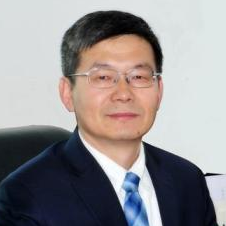Nanofunctional Electrode Materials
A special issue of Nanomaterials (ISSN 2079-4991). This special issue belongs to the section "Energy and Catalysis".
Deadline for manuscript submissions: closed (10 November 2023) | Viewed by 166
Special Issue Editors
Interests: carbon-related nanomaterials; 2D materials; electrode materials for energy storage and conversion; supercapacitor
Special Issues, Collections and Topics in MDPI journals
Interests: electrochemical energy storage and conversion; heterogeneous catalysis; surface and interface science; advanced electron microscopy
Special Issues, Collections and Topics in MDPI journals
Special Issue Information
Dear Colleagues,
Energy storage devices with high electrochemical performances play vital roles in the conversion and efficient utilization of electrical energy. In order to maximize the energy density and power density of the electrode materials, it is essential to increase the volume/mass utilization rate and the electrochemical reaction rate.
The electrochemical energy storage mechanisms of the many electrode materials are mainly divided into the battery energy storage mechanisms of intercalation, conversion, and alloying, and the supercapacitor energy storage mechanisms of electric double-layer reaction and pseudocapacitance reaction. The high energy density of battery is due to the fact that current is mainly provided by the diffusion process, which has a high mass/volume utilization rate of electrode material. However, the reaction rate is greatly affected by the diffusion kinetics. In contrast, the high power density of supercapacitor, attained on account of the current, is mainly contributed by capacitive reaction, leading to a high reaction rate. However, the utilization rate of the material is not high. Therefore, if the barrier of ion diffusion and migration is lowered until it is as easy as adsorption and desorption, and if the volume change caused by the phase transition is weakened by the morphology, the coexistence of high energy density and power density can be achieved.
With the research into electrode materials, higher volume/mass utilization also means more electrochemically active sites, larger electrode liquid–electrode contact areas, and more adequate electrochemical reactions. The gradually decreasing particle size of the electrode material makes the electrochemical reaction gradual transition from the surface or near-surface reaction to the overall reaction. This process improves the volume/mass utilization rate of the materials and thereby increases the energy density. Concurrently, this reduces the ion diffusion path, thereby speeding up the electrochemical reaction speed, and then increases the power density.
In summary, we hope that through the design of high-performance electrode materials with nanometric or otherwise smaller particle size, the combination of the physical properties of the electrode material itself, the electrochemical mechanism, and advanced in situ electron microscopy technology, we can carry out precise electrochemical reactions and undertake mechanistic exploration.
Prof. Dr. Weitao Zheng
Prof. Dr. Wei Zhang
Guest Editors
Manuscript Submission Information
Manuscripts should be submitted online at www.mdpi.com by registering and logging in to this website. Once you are registered, click here to go to the submission form. Manuscripts can be submitted until the deadline. All submissions that pass pre-check are peer-reviewed. Accepted papers will be published continuously in the journal (as soon as accepted) and will be listed together on the special issue website. Research articles, review articles as well as short communications are invited. For planned papers, a title and short abstract (about 100 words) can be sent to the Editorial Office for announcement on this website.
Submitted manuscripts should not have been published previously, nor be under consideration for publication elsewhere (except conference proceedings papers). All manuscripts are thoroughly refereed through a single-blind peer-review process. A guide for authors and other relevant information for submission of manuscripts is available on the Instructions for Authors page. Nanomaterials is an international peer-reviewed open access semimonthly journal published by MDPI.
Please visit the Instructions for Authors page before submitting a manuscript. The Article Processing Charge (APC) for publication in this open access journal is 2900 CHF (Swiss Francs). Submitted papers should be well formatted and use good English. Authors may use MDPI's English editing service prior to publication or during author revisions.
Keywords
- energy density
- power density
- battery
- supercapacitor
- electrode
- microscopy
- microstructure







